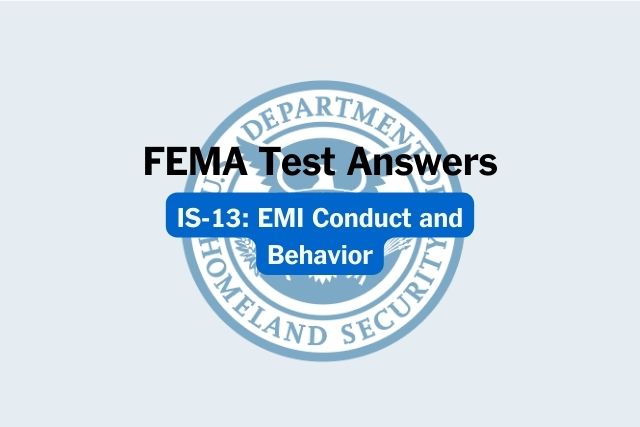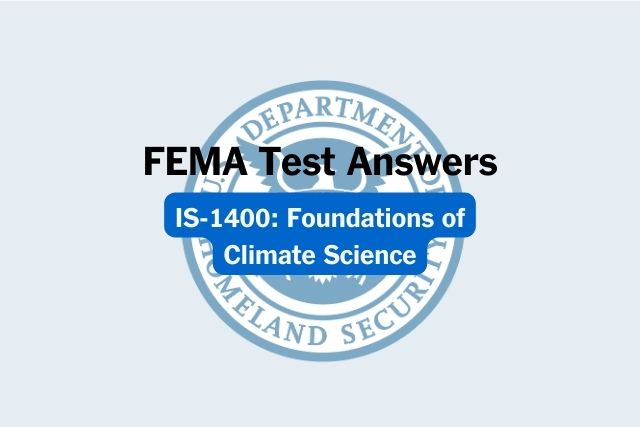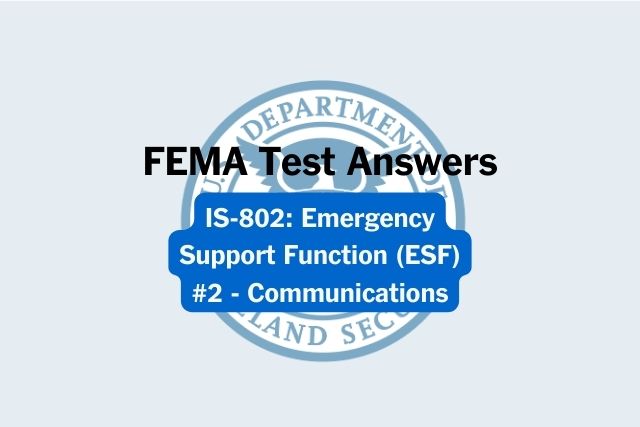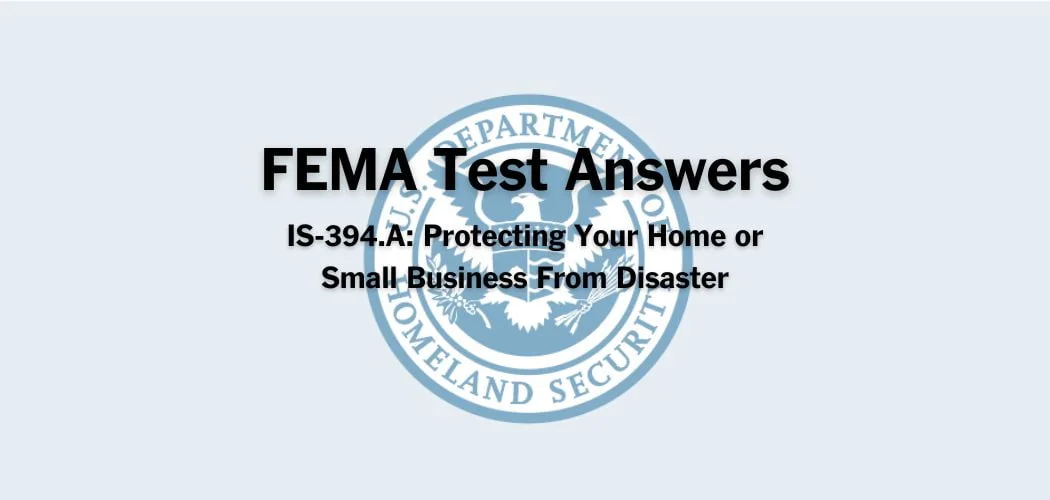Overview: The FEMA IS-368.A course was revised and published on Nov. 16, 2023 to increase awareness and understanding of the need for full inclusion of disaster survivors and FEMA staff who are people with disabilities.
Primary audience: FEMA IS-368.A is for all personnel involved in disaster operations at the Joint Field Office (JFO) and in other disaster facilities and activities.
FEMA IS-368.A test answers
NOTE: Each time this test is loaded, you will receive a unique set of questions and answers. The test questions are scrambled to protect the integrity of the exam.
Question 1. Which statement is more appropriate?
A. Person who has to have a wheelchair
B. Person who uses a wheelchair✅
C. Wheelchair bound
D. Wheelchair person
Question 2. Which one of these statements is true?
A. People with disabilities can provide their own accommodations.
B. Hearing children of Deaf parents should be utilized to interpret the FEMA registration intake if no other interpreter is around.
C. People with disabilities who need accommodations have friends and family members who can and should provide those accommodations for them.
D. Emergency management and partner agencies are responsible for providing accommodations for people with disabilities in a disaster and should not rely on friends and family.✅
Question 3. How often should braille accommodations be provided?
A. Sometimes if it was requested by someone who needs it.
B. Always, regardless of how many people use it.✅
C. Never, not enough people use it.
D. Sometimes, only if there are enough people that need it.
Question 4. What is one way that DIAD’s and RDIS’ do NOT support Individual Assistance?
A. Provide disability awareness training to Individual Assistance providers.
B. Assist Individual Assistance operations in identifying unmet needs of people with disabilities.
C. Providing disability subject matter expertise.
D. Fill out FEMA applications for people with disabilities.✅
Question 5. The mission of the ODIC is:
A. Train FEMA staff on accessible and inclusive programs.
B. Establish a central point of contact for information and resources related to people with disabilities in disasters.✅
C. Create opportunities for people with disabilities to engage in emergency management planning.
D. Help people with disabilities before, during, and after disasters.
Question 6. John, the Emergency Manager is talking to Mark, a survivor who has a dog. John wants to know if the dog is a service animal. Which of the following are appropriate for John to ask?
A. “Can I pet your dog?”
B. “Can I see the animal’s certification card?”
C. “What has your service animal been trained to do?”✅
D. “To determine the status of your dog, we will need to know what your disability is.”
Question 7. Equality and Equity are not the same thing. Equality…
A. is ensuring that everyone is treated the same and give the same opportunities; applies to all programs and services and is irrespective of how people may have responded to these opportunities in the past.✅
B. is ensuring that all people are treated fairly and with respect so that no individuals have complaints or concerns.
C. recognizes that each person has different circumstances and allocates the exact resources and opportunities needed to reach an equal outcome.
D. is the consistent and systematic fair, just, and impartial treatment of all individuals including people who belong to underserved communities that have been denied such treatment.
Question 8. How can emergency managers support the integration of people with disabilities through language and word choice?
A. Make sure colleagues have the appropriate language information available at all times for easy reference.
B. Ensure that public written documents use appropriate language.
C. Using appropriate language when they are close by and can hear you.
D. Always use appropriate language; everyone deserves respect at all times.✅
Question 9. Which model of disability views the impact of the disability as a limitation of the community?
A. Community Model of Disability
B. Social Model of Disability✅
C. Moral Model of Disability|
D. Medical Model of Disability
Question 10. Should emergency managers take extra time or measures when working with people with disabilities?
A. No, people with disabilities have friends and family to help them.
B. Maybe, if there isn’t anything else that needs to be done and staff are able to provide extra assistance.
C. No, they should get the time that everyone else gets to be sure that services are equal
D. Yes, when necessary.✅
Question 11. Will all people with disabilities need FEMA assistance after a disaster?
A. No, but they will all have other support systems so they will not need anything from FEMA.
B. No, some will need assistance, and some won’t, just like others.✅
C. Yes, and FEMA can give them everything they need to assist them to fully recover from the disaster.
D. Yes, but it is not FEMA’s responsibility to help everyone, people should be personally prepared.
Question 12. The impacts of historical marginalization and exclusion include:
A. People with disabilities gaining visibility and participation in society and disaster planning.
B. People with disabilities being perceived from a social model.
C. People with disabilities being unable to receive critical safety information over public communication systems.✅
D. People with disabilities being prioritized to receive disaster programs and services.
Question 13. What are affirmative and helpful ways to accommodate someone who appears very stressed or has disclosed to you a psychiatric disability?
A. Be cautious about getting involved in conversations. Instead, immediately refer them to mental health services.
B. Call security to avoid any behavioral escalation.
C. Provide extra time to actively listen and offer referrals if they would like additional support.✅
D. Ignore them.



